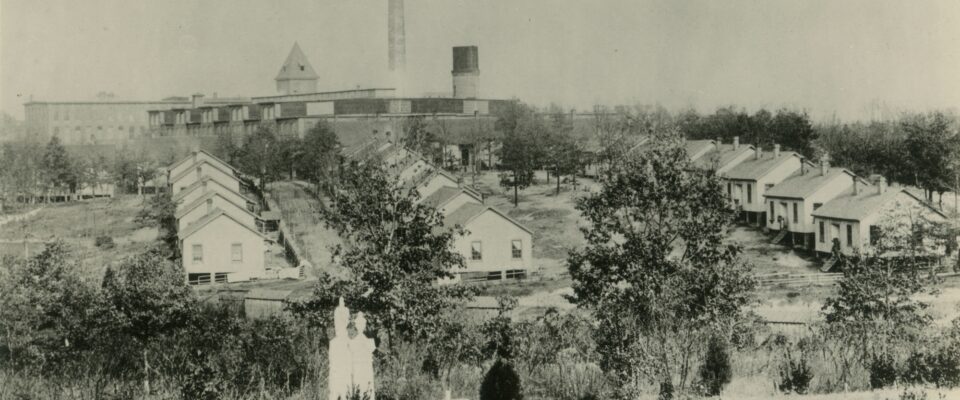The Village
The following is an abridged excerpt from the National Register of Historic Places – Nomination Form Application, originally submitted in 1975 and prepared by Julia Brook (Historical Researcher), Lee Dunagan (Intern), and Elizabeth Z. Macgregor (Consulting Architectural Historian).
The Cabbagetown Mill District, located near the heart of downtown Atlanta, is a typical Southern textile mill village. Less consistent in its appearance than some mill villages, its multitude of housing styles are a product of its continuing evolution from 1881 until after the turn of the century.
Occasional commercial enterprises are found throughout the village but most of these are of the long-established family-run type that serve the immediate community and its needs. The intrusions that exist within Cabbagetown are mostly those of more recent brick apartment houses.
Standing as one of the oldest and largest industrial concerns and settlements in Atlanta, Cabbagetown is significant for being the site of the first cotton processing mill to manufacture cotton bags standardized in size and as site of one of the longest, factory-supported villages in the South.
The new site selected for the mill was on land formerly used by the Atlanta Mining and Rolling Mill and was chosen for its proximity to the coal supplying railroad and to a branch of the Yellow River, no longer extant, which supplied the factory with the water necessary to carry on its operations.
Due to the fact that the mill’s new location was in a sparsely populated area of town at the time, the owners of the spinning company decided to follow a common practice of southern textile mills and erect housing for its employees. The earliest of these dwellings, built shortly after 1881 and no longer extant, were in an area known to the locals as the “Factory Lot”. The oldest houses remaining today are along what is now Reinhardt Street, named after Malthilda Reinhardt, wife of one of the factory’s owners and a highly trained singer and notable musician. This street was originally known as Second Street and sported five residential units that were built sometime between 1886 and 1892; an additional three units, those closest to Boulevard, were erected by 1899. Two-story porches were added to all of these early houses c. 1917.
When the first mill building burned in 1905, many of the original houses in the Factory Lot were damaged; some of these houses were rebuilt and, acquiring additional land to the east, the mill village was extended. Housing was provided on the newly acquired property by both new construction and the moving of older houses from Boulevard south of Carroll Street by mule and logs. Many of these “moved” houses were re-located on Iswald Street and some four-unit apartment houses were moved from Fenwick Street to the east side of Carroll Street. The village was enlarged further in the period 1917-1922 and many of these holdings already possessed housing; those without such structures saw new housing built on them by the mill.
Much of Cabbagetown’s housing was without plumbing and electricity until well into the twentieth century. The hydrants, located on the back porches, and the outhouses were replaced with indoor plumbing in the 1940’s; kerosene lamps and coal heaters were replaced c. 1950 when the housing was rewired, but the wiring was such that only lights and no appliances could be sustained.
Recreation space for the Cabbagetown community was provided by a park known as “Noah’s Ark” due to a large, one-story apartment building that was nearby. “Red Hill,” whose name refers to a red clay mound, was the site of a baseball diamond that was located between Fulton Terrace and Memorial Drive.
The entire neighborhood and its lawns were maintained by the mill which also provided garbage, security, medical, dental, library and nursery services for its workers. Only when the mill was sold by the Elsas family in 1957 [1956?] did most of these services end; today, only medical and nursery care services are still available. [NOTE: AT THE TIME OF THIS APPLICATION, THE MILL WAS STILL OPERATING.]
At the time the mill was sold, the residences were offered to their respective tenants, some of whom purchased the houses they had lived in for years; those structures not bought were sold in groups to non-residents.

